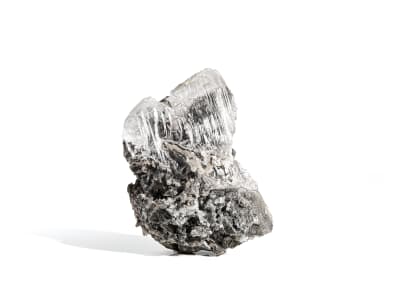Selenite is the name for transparent, colorless to near colorless crystals of gypsum, a hydrous calcium sulfate that is found in a number of forms. The name "selenite" comes from the Greek word selene, meaning "moon", no doubt in reference to the gem's white glow. Gypsum, in all varieties, is very soft and has perfect cleavage so it should be handled with care.
General Information
Common Name
Selenite
Species
Gypsum
Transparency
Translucent
Dispersion
Strength: Strong Fire
Refractive Index
1.520-1.529
Tolerance:(+0.001/-0.001)
Tolerance:(+0.001/-0.001)
Birefringence
0.009-0.01
Optic Character
Biaxial
Optic Sign
Positive
Polariscope Reaction
Aggregate (AGG), Doubly Refractive (DR)
Fluorescence
SWUV: Inert to weak brownish white or greenish white
LWUV: Inert to weak brownish white or greenish white
LWUV: Inert to weak brownish white or greenish white
CCF Reaction
None
Pleochroism
None
Hardness
1.5-2
Streak
White
Specific Gravity
2.250-2.350 Typical:2.300
Toughness
Poor
Luster
Waxy, Pearly, Vitreous, Subvitreous
Stability
Fair
Fracture
Granular
Cleavage
Perfect, in one direction, Good, in two directions
Chemical Name
hydrous calcium sulfate
Chemical Formula
CaSO4-2H2O
Crystal System
Monoclinic
Chemistry Classification
Sulfate
Selenite Colors
-
 Black
Black -
 Blue
Blue -
 Brown
Brown -
 Colorless
Colorless -
 Gray
Gray -
 Green
Green -
 Pink
Pink -
 White
White -
 Yellow
Yellow
Countries of Origin
Canada; Morocco; Unknown; United States of America; Brazil; Mexico; Madagascar; Australia; Spain
Care
Due to its soft nature selenite needs to be kept away from harder materials that will damage its surface. Selenite will turn cloudy if exposed to heat.

